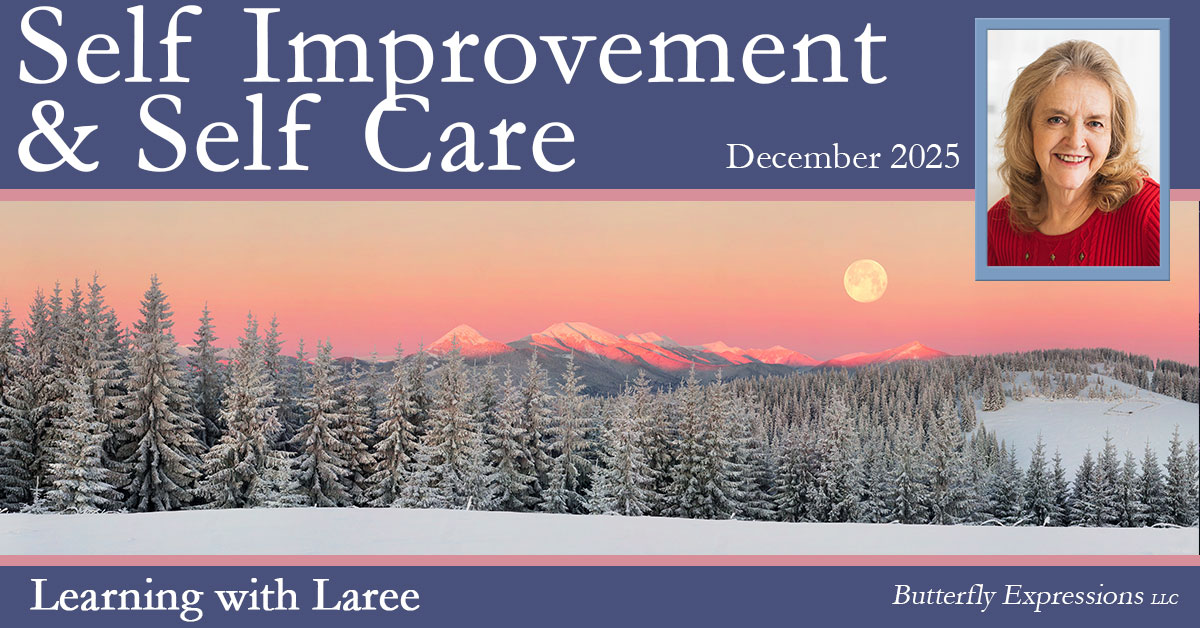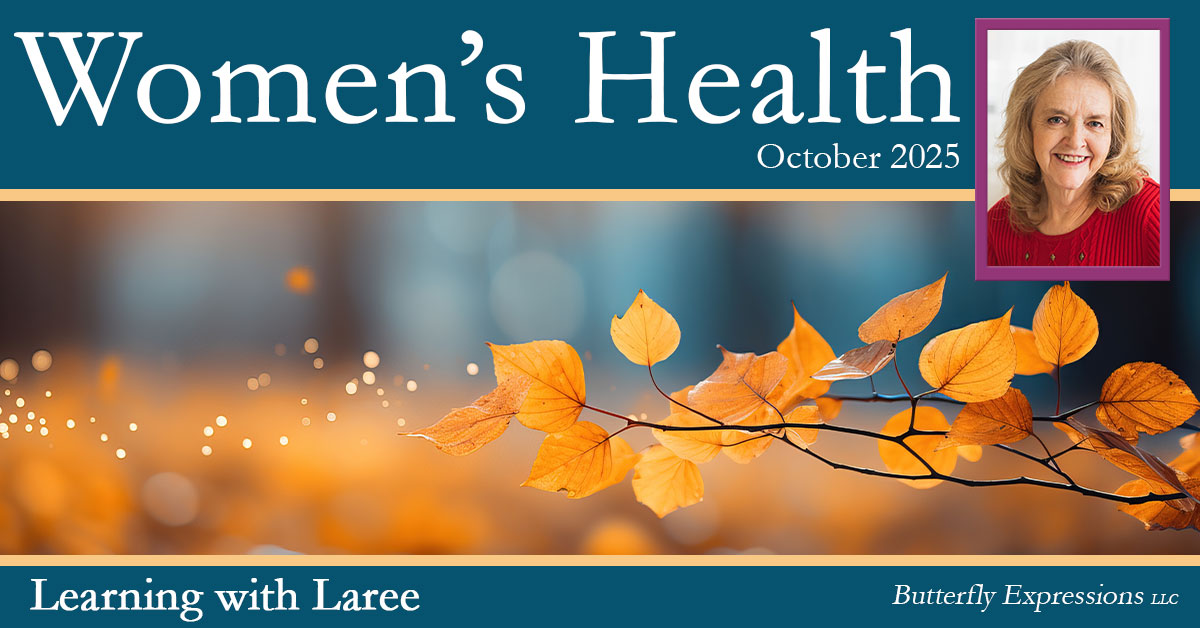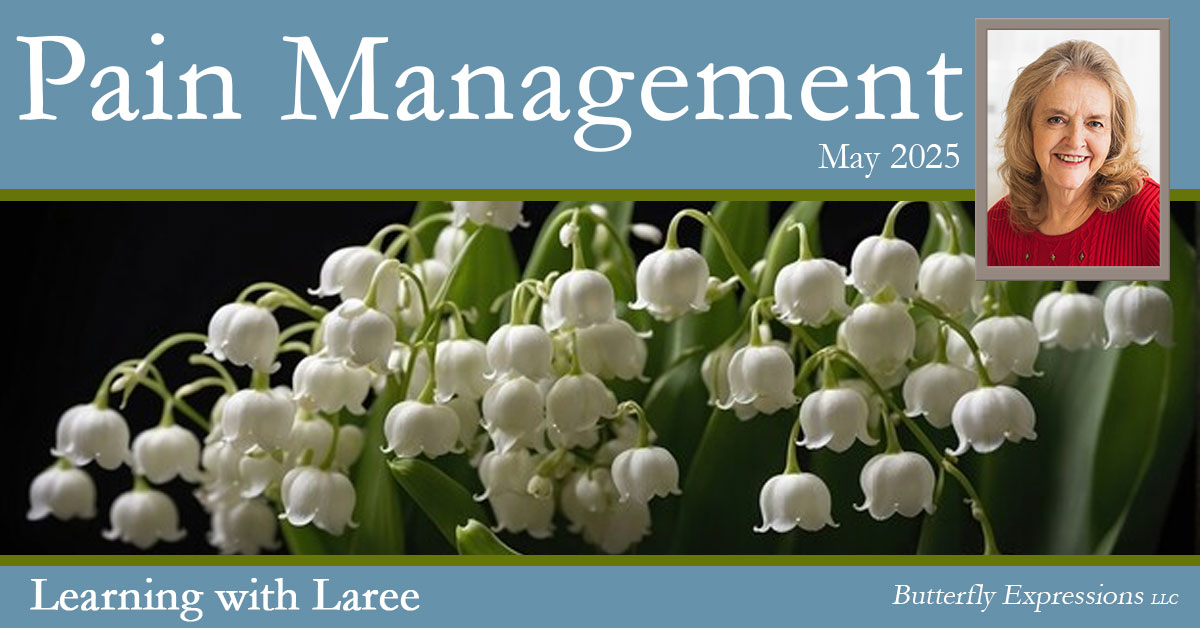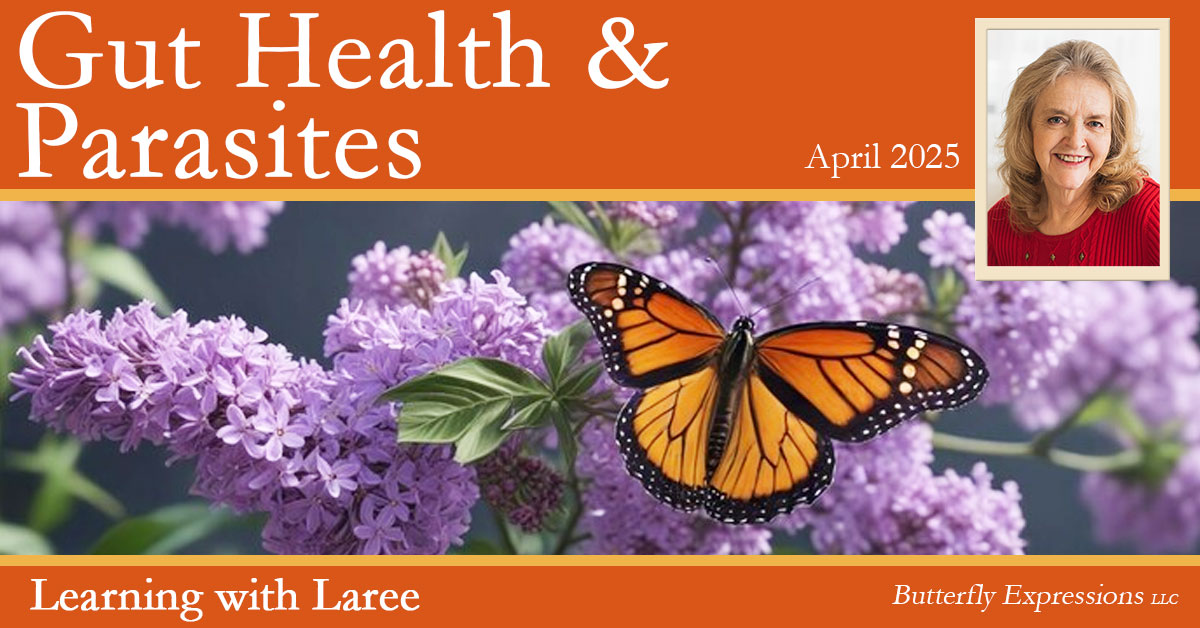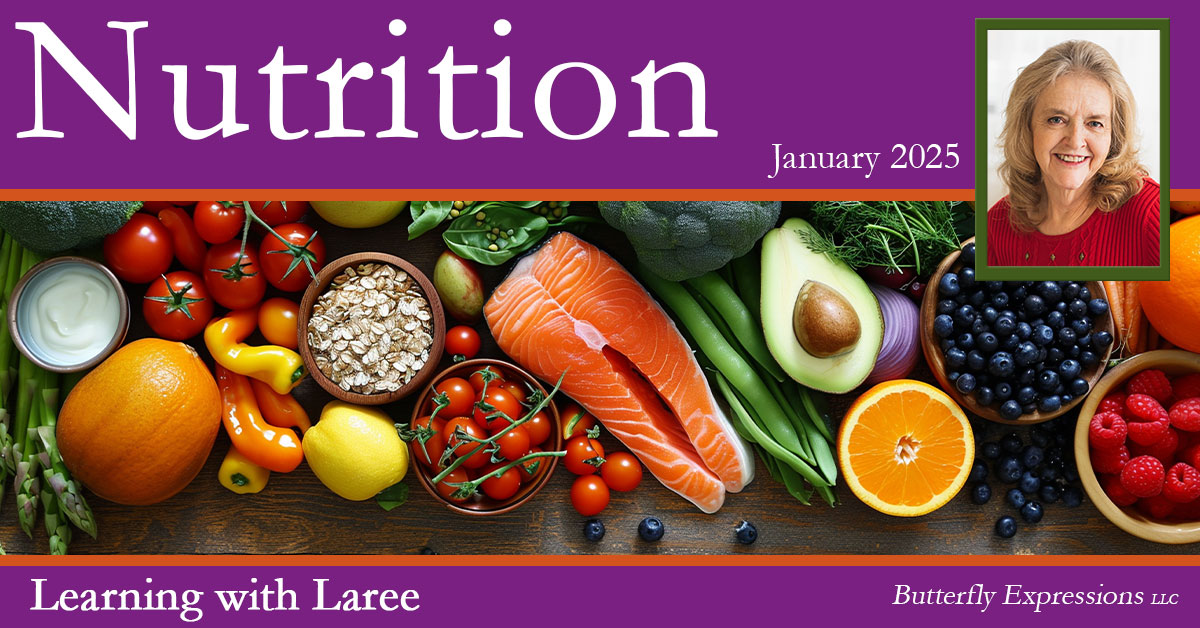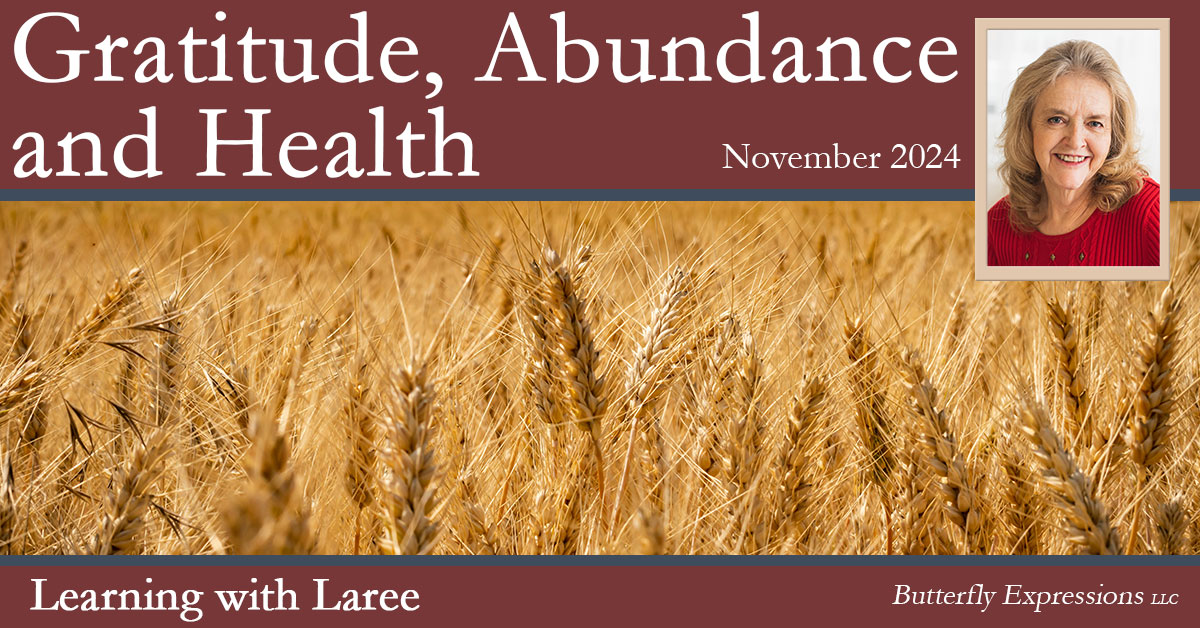this is a page for
Browsing Tag: BHM
When the words ‘self-care’ or ‘self-improvement’ are heard, people tend to conjure up different trains of thought, especially if they apply them immediately to themselves. For some of us, the idea of ‘caring for ourselves’ may get confused with ‘caring too much for self” and/or “caring too little for others”. But failing to look out for your own health can result in a decline in physical and/or mental health in so many gradual and insidious ways! And your poor health, or even lack of optimal health, can impact those around you in so many ways.
I would like to conclude this introduction to this month’s newsletter by quoting from page 3 of my book Butterfly Miracles with Herbal Remedies.
The Focus of Our Work
Herbal remedies and other natural modalities can be utilized in two differing ways. The first method is to focus on the immediate now! Someone you love is ill or unhappy today. Your concern becomes making the pain and the distressing symptoms go away, and making them go away right now! This approach accomplishes a great deal of good in people’s lives. It becomes easy to assume that your work is done when the current crisis has passed. This is where the second method comes in.
With natural healing methods our focus should be the building of healthy, disease free, stress resistant bodies and minds, not just fixing the current symptoms. We are looking for root causes and basic imbalances within ourselves. We are seeking ways to eliminate problem areas and become healthy, happy, vibrant versions of ourselves. We must, of course, cope with what is happening in our lives right now. We have to get up and function each day, after all, but at the same time we need to hold in our mind the goal of strong immune systems, and healthy minds and bodies. Try not to lose sight of this goal amidst the stresses of everyday living. It is far better to eliminate the asthma completely than to get really good at coping with frequent attacks.
Albert Einstein is reputed to have said that he studied science in order to ‘understand God’s thoughts’ as He created the world. As I have studied anatomy and physiology and the healing properties of “God’s pharmacy’—for a lifetime—I am always in awe of the genius of our Creator and His overwhelming love for each of us!
With plants, in either herb or essential oil form, we have been given wonderful ways to nourish and heal our bodies. And the energetic miracle that is Blessed Water/Homeopathic Remedies is almost beyond belief!
We are meant to be well and happy and energetic into our advanced years! Please do not accept pain and physical limitations as a normal part of the aging process! Eat right. live well, and use the wonderful and amazing remedies that God has provided for us everywhere in the world!
As I have said often and with emphasis over many years, “All drugs have side effects!”
As an introduction to this section on Alternative Pain Management, I am including parts of an “FDA Drug Safety Communication” issued on July 9, 2015. If you wish to read the entire communication (with pages of additional information for patients and consumers and even more information for Health Care Professionals along with a comprehensive Data Summary) I am providing the link to the FDA announcement itself on the U.S Food & Drug Administration’s web page.
This statement certainly is true of the drugs used for pain management, as is illustrated by these statements taken from the FDA website itself. The use of herbs, essential oils, and Blessed Water or Homeopathic remedies is an effective and safe way to manage pain.
The digestive system is a very intricate and complex system. To my mind, it is much like a fragile ecosystem. There is a constant need for balance in the digestive system, just as there is in nature. The balance between the organs and among the different types of healthy bacteria found in the digestive system is absolutely essential to good health. When the digestive system is not working properly, the body becomes either malnourished or toxic. As a result, all the woes of poor nutrition and/or a toxic system eventually show themselves in the overall health of the body and mind.
Due to the many different organs included in the digestive system and their specific roles in the body, there are a lot of essential oils and herbs which have an ability to impact this system and bring about improvements. This month’s newsletter targets only a few of them. (I know from the length of the article that it seems like we surely must have mentioned them all. Not so—but it did feel like that to me as I wrote it.) I hope you find something useful to you or your family in the information I have tried to present here.
There is, absolutely and without doubt, no road to good health (or recovery from illness and chronic ailments) without good nutrition being a priority every day!
Studies done at the School of Gerontology, University of Southern California, indicate that if a person has a sub-clinical nutritional deficiency, he or she might appear ‘perfectly normal’ except for increased susceptibility to disease, longer recovery time from surgery, adverse reactions to vaccines, extreme fatigue that interferes with normal functioning, depression, insomnia, and irritability.
Richard Revlin, M.D., of the Sloan-Kettering Cancer institute says,
“In the United States today, we rarely see cases of classical vitamin deficiency, such as scurvy and pellagra—to name just a few cited in this article. However, we are now beginning to recognize a vast new series of marginal deficiencies related to disease. Marginal deficiency, it now appears, may be a surprisingly common phenomenon.”
One very important reason herbal remedies work for a particular problem is that the herb has provided one or more vital nutrients that are missing in the diet.
It is important to understand, and remember, that vitamins and minerals chemically constructed in a laboratory cannot fill the nutritional needs of the body. Man has been unable to produce a single molecular structure that is exactly identical to those produced in nature. Laboratories can assemble the correct components in the correct amounts but somewhere in the joining of the atoms will be a rotation to the left that should be rotating to the right. The resulting isomer (that is the scientific word for it) is not bio-identical, no matter what the advertising says. This is as true of hormones and amino acids as it is of vitamins. (Hint: If the supplement you are buying says “L-something or other”, the ‘L’ is a warning that this supplement has been artificially produced in a laboratory and will not be providing the nutrition you think you are getting!
There is a great deal of information about the nutritional components of herbs in the book, Butterfly Miracles with Herbal Remedies which can be purchased at Butterflyexpress.shop. Nutrition and health is a topic that has fascinated me for years. See the full list of topics.
My husband and I (he does this better than I do sometimes) look at the plants—every one, and perhaps the rocks and minerals, too—as personal messages from a loving Heavenly Father. Because He understood that we would not always ask for, or even recognize His help in our lives, He endowed the various plants with His own healing capacities and invited us to partake of them to balance and heal our own lives. Plants affect us, not just on a physical (vitamin and molecular) level, but on a spiritual plane as well. It is impossible to use an herbal remedy or and essential oil with an intent to heal the physical body without partaking of its ability to bring light, wisdom, healing, and peace into your life. This peace and wisdom will be multiplied many times over if your use of the herbs, the essential oils, and the blessed water/homeopathic remedies with gratitude to the Creator and an acknowledgment of the role of the atonement in the healing of both physical and emotional (spiritual) pain. Embracing an attitude of GRATITUDE opens the door to ABUNDANCE, allowing us to fully experience the gifts of HEALTH and healing that surround us. See the full list of topics.
BHM
This herbal combination is comprised of some pretty amazing herbs.
Comfrey Root
Lobelia
Black Walnut Hulls
Mullein
Plantain
Marshmallow
Oregon Grape
Red Clover
Skullcap
Uva Ursi
White Oak
Wormwood
BHM is the best all-around super-nutritious herbal combination. My family has been using this remedy or variations, for nearly all the years of my married life—and that is a lot of years! What do the initials ‘BHM‘ stand for? BHM was formerly known as Bone-High Mineral.

